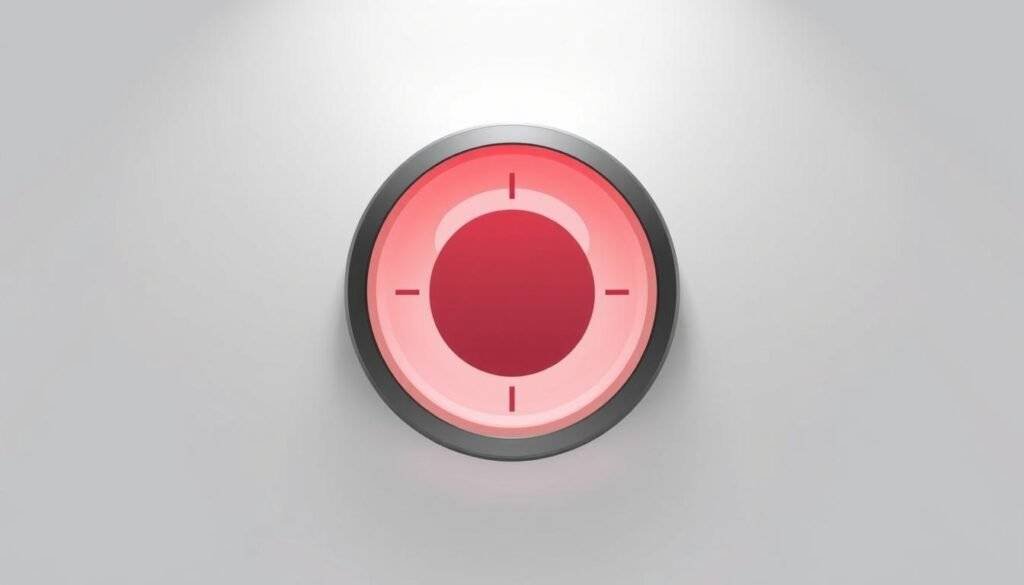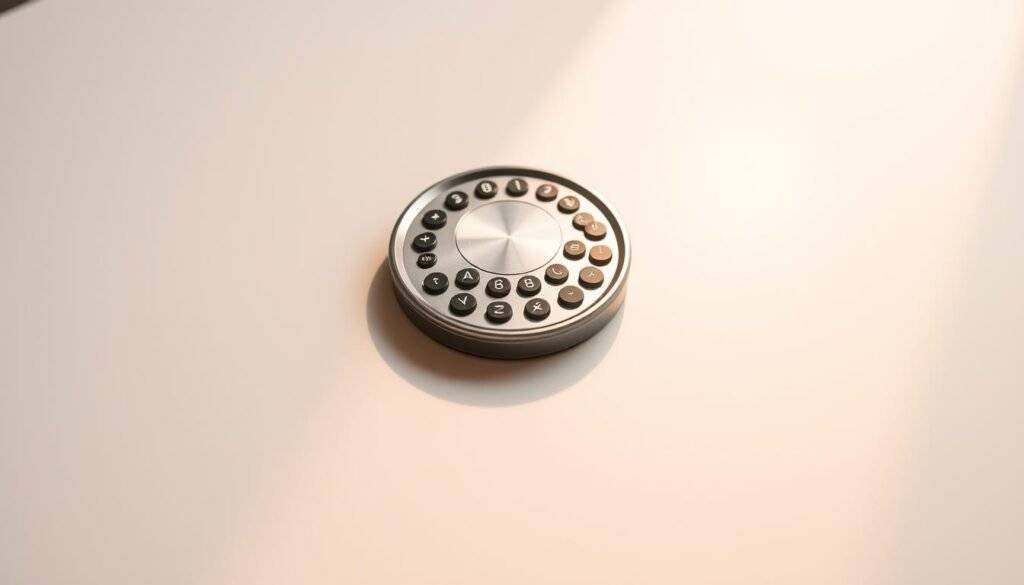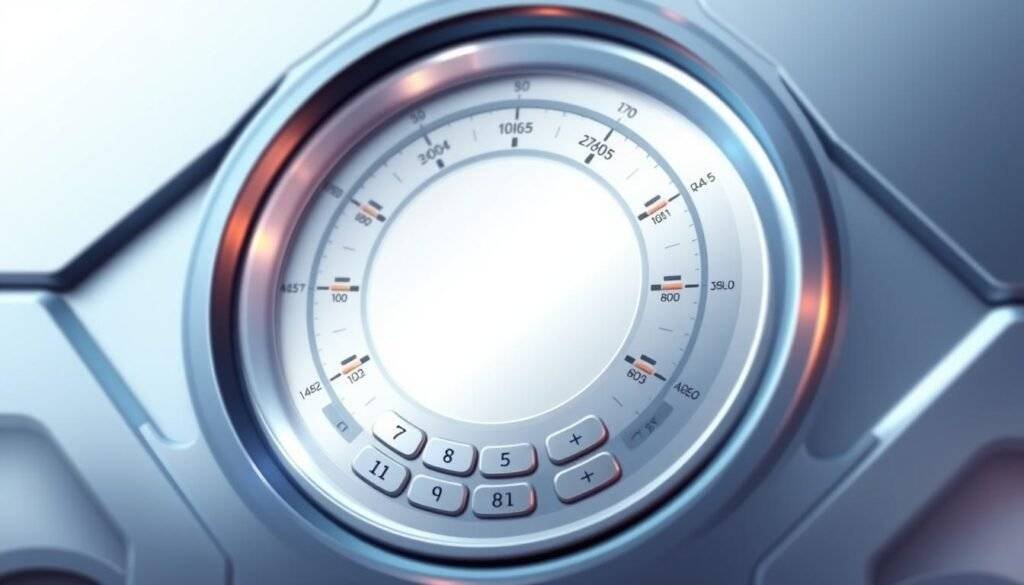Are you tired of performing complex calculations to determine the properties of a circle? Our comprehensive tool simplifies the process by allowing you to calculate the circumference, diameter, area, and radius of any circle with ease.
With our tool, you can easily find essential circle measurements without manual calculations. We provide a complete overview of circle terminology and explain the mathematical relationship between different circle measurements.
Our calculator saves you time by automatically applying the correct formula based on your input values, making it versatile for all your calculation needs.
Key Takeaways
- Simplify circle-related calculations with our comprehensive tool
- Easily calculate circumference, diameter, area, and radius
- Understand circle terminology and mathematical relationships
- Save time with automatic formula application
- Versatile calculator for various calculation needs
Understanding Circle Basics
A circle is more than just a round shape; it’s a geometric figure with unique properties and terminology. To work with circles, we need to understand their fundamental characteristics.
What is a Circle?
A circle is defined as a set of all points that are at a given distance from a central point, known as the center. This definition forms the basis of understanding various circle-related concepts.
Important Circle Terminology
Understanding circle terminology is crucial for calculations involving circles. Key terms include:
- Radius and Diameter: The radius is a line segment from the center to any point on the circle, while the diameter is a line segment passing through the center with endpoints on the circle.
- Circumference: The distance around the circle.
- Area: The space enclosed within the circle.
Radius and Diameter
The radius and diameter are closely related, with the diameter being twice the length of the radius (diameter = 2 × radius). This relationship is fundamental to circle calculations.
The circumference refers to the distance around the circle, essentially its perimeter. It’s a critical value in determining the circle’s size and is used in various formulas.
Area
The area of a circle represents the space inside it. Calculating the area is essential in numerous mathematical and real-world applications.
Circle Calculator: Essential Formulas

Circle calculations are rooted in a few key formulas that enable us to determine various properties of a circle. These formulas are fundamental to understanding and working with circles in mathematics and real-world applications.
Radius and Diameter Formulas
The relationship between the radius and diameter of a circle is straightforward: the diameter (d) is twice the radius (r), given by the formula d = 2r. This simple yet crucial formula allows for easy conversion between these two important measurements.
Circumference Formula
The circumference (C) of a circle, which is the distance around it, can be calculated using the formula C = 2πr or C = πd. This formula is essential for determining the perimeter of a circle.
Area Formula
To find the area (A) of a circle, we use the formula A = πr². This formula shows that the area is directly proportional to the square of the radius, highlighting the significance of the radius in circle calculations.
The Role of Pi (π) in Circle Calculations
Pi (π) is a constant representing the ratio of a circle’s circumference to its diameter. It is an irrational number, approximately equal to 3.1415926535. Pi is crucial in all circle calculations, including area, circumference, and diameter determinations.
How to Use Our Circle Calculator
To make circle calculations easier, we’ve developed a user-friendly circle calculator. This tool allows you to compute various circle parameters with ease.
To use our circle calculator, simply type the given dimension into the calculator. If you need to change the units, click on the unit name and choose the one you need from a drop-down list.
Finding the Area of a Circle
To find the area of a circle, you can input either the radius or diameter into our calculator. Once you’ve entered a value, the calculator will instantly provide the area.
For instance, if you know the radius, you can directly input it and get the area. Similarly, if you have the diameter, our calculator will compute the area using the formula: area = π * (diameter/2)^2.
Calculating the Circumference
Calculating the circumference of a circle is just as straightforward. You can input the radius or diameter, and our calculator will provide the circumference using the appropriate formula.
Determining Radius and Diameter
If you know the circumference or area of a circle, you can use our calculator to determine the radius and diameter. This feature is particularly useful when you need to find missing dimensions.
By using our circle calculator, you can save time and reduce the complexity associated with manual calculations.

Practical Applications and Examples
We use circle calculations in various aspects of life, from designing circular objects to determining materials needed for construction projects. Circle measurements are essential in many professional and everyday settings, including construction, engineering, design, and more.

Real-World Examples
Circle calculations have numerous practical applications. For instance, determining the size of a crop circle, which can be approximately 300 feet in diameter with an area of 70,686 ft², requires understanding circle measurements. Other examples include calculating the circumference of a bike wheel and finding the area needed for circular objects like pizzas.
- Calculating the area of a circular garden plot when the diameter is known.
- Determining the amount of fencing needed for a circular enclosure by calculating its circumference.
- Designing circular patios, pools, or other structures using circle measurements.
Step-by-Step Calculation Example
Let’s walk through a step-by-step example of calculating all circle measurements from a single known value. Suppose we know the diameter of a circle is 20 units. We can calculate the radius, circumference, and area using the formulas discussed earlier. For a diameter of 20 units, the radius is 10 units, the circumference is approximately 62.83 units, and the area is approximately 314.16 square units.
Conclusion
In conclusion, understanding circle calculations is crucial for various practical applications. Our circle calculator simplifies the process by automatically applying the correct formulas based on your input, whether you’re calculating the area of a circle, its circumference, radius, or diameter.
We’ve highlighted the importance of understanding the relationships between radius, diameter, circumference, and area of a circle. By using our calculator, you can save time and improve accuracy in various projects. The versatility of our circle calculator makes it an essential tool for solving circle-related problems in different contexts.
We encourage you to experiment with the calculator for your own projects and calculations, reinforcing the practical applications of circle calculations in everyday life and professional settings. By mastering these fundamental geometric principles, you can achieve more accurate results.
FAQ
What is the formula to find the area of a circle?
We use the formula A = πr² to find the area, where A is the area and r is the radius of the circle.
How do I calculate the circumference of a circle?
To calculate the circumference, we use the formula C = 2πr or C = πd, where C is the circumference, r is the radius, and d is the diameter.
What is the relationship between the radius and diameter of a circle?
The diameter is twice the radius. We can express this as d = 2r, where d is the diameter and r is the radius.
Can I find the radius if I know the circumference?
Yes, we can find the radius using the formula C = 2πr. By rearranging it, we get r = C / (2π), where C is the circumference.
How do I use the square root to find the radius from the area?
We can rearrange the area formula A = πr² to solve for r. This gives us r = √(A / π), where A is the area.
What is the value of Pi (π) used in circle calculations?
Pi (π) is approximately 3.14159. We use this value in various circle calculations, including area, circumference, and diameter.

